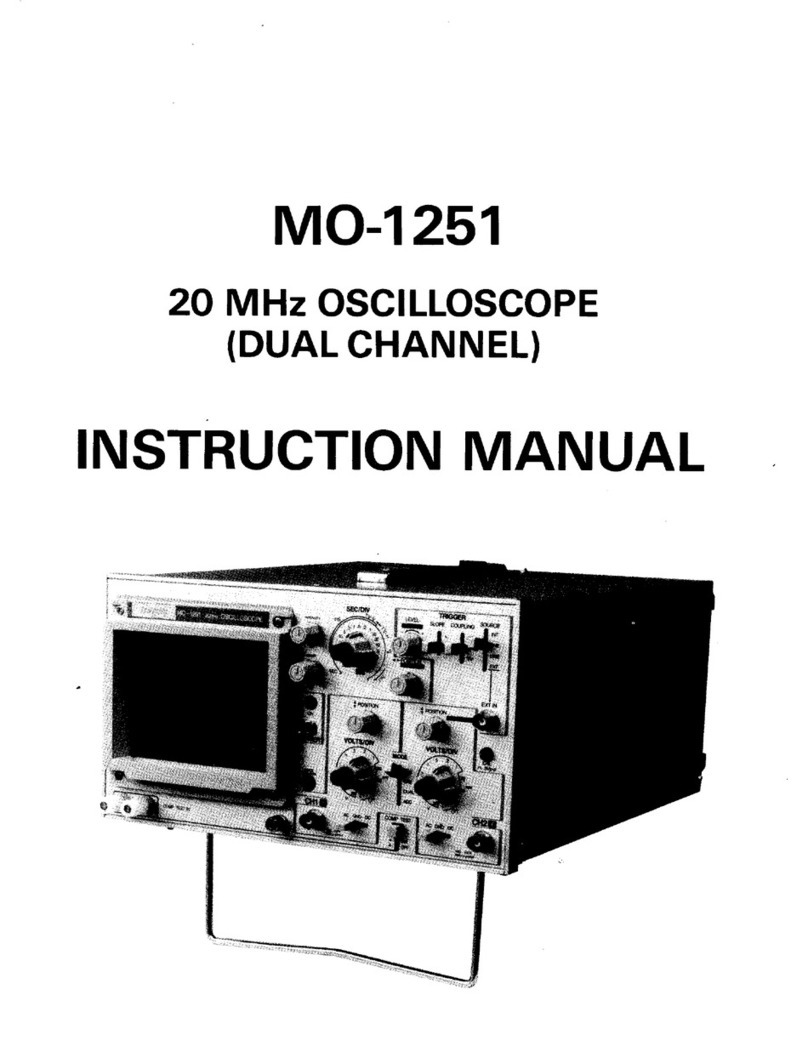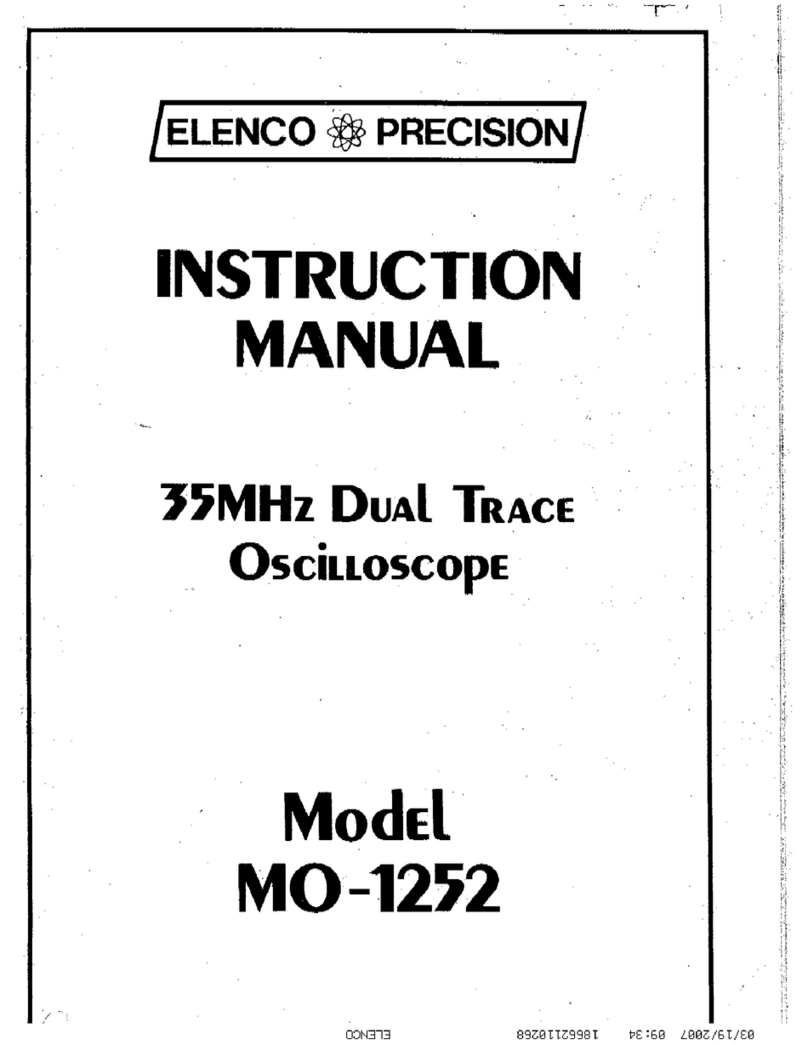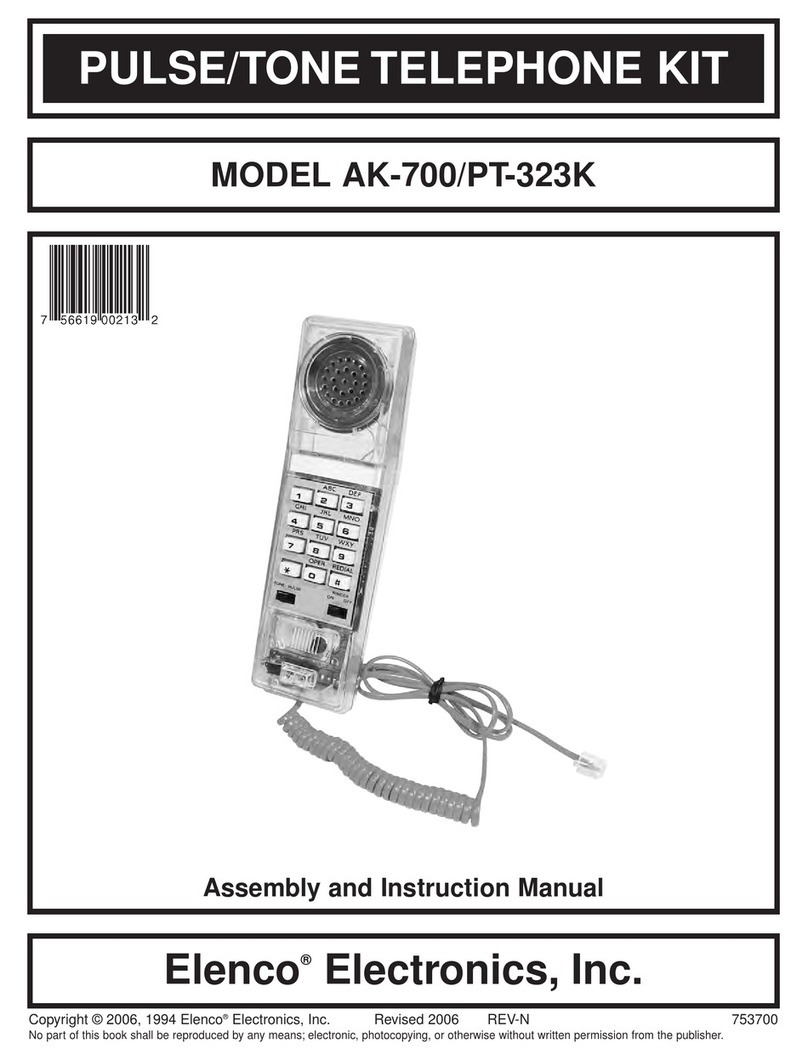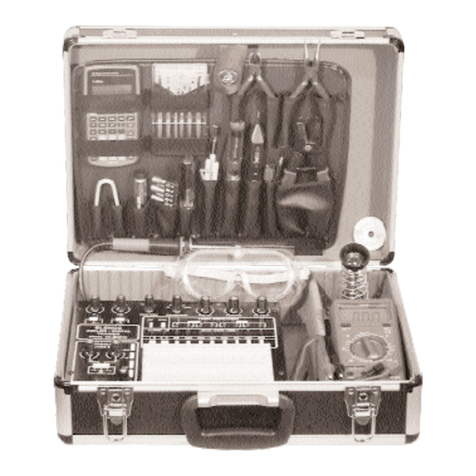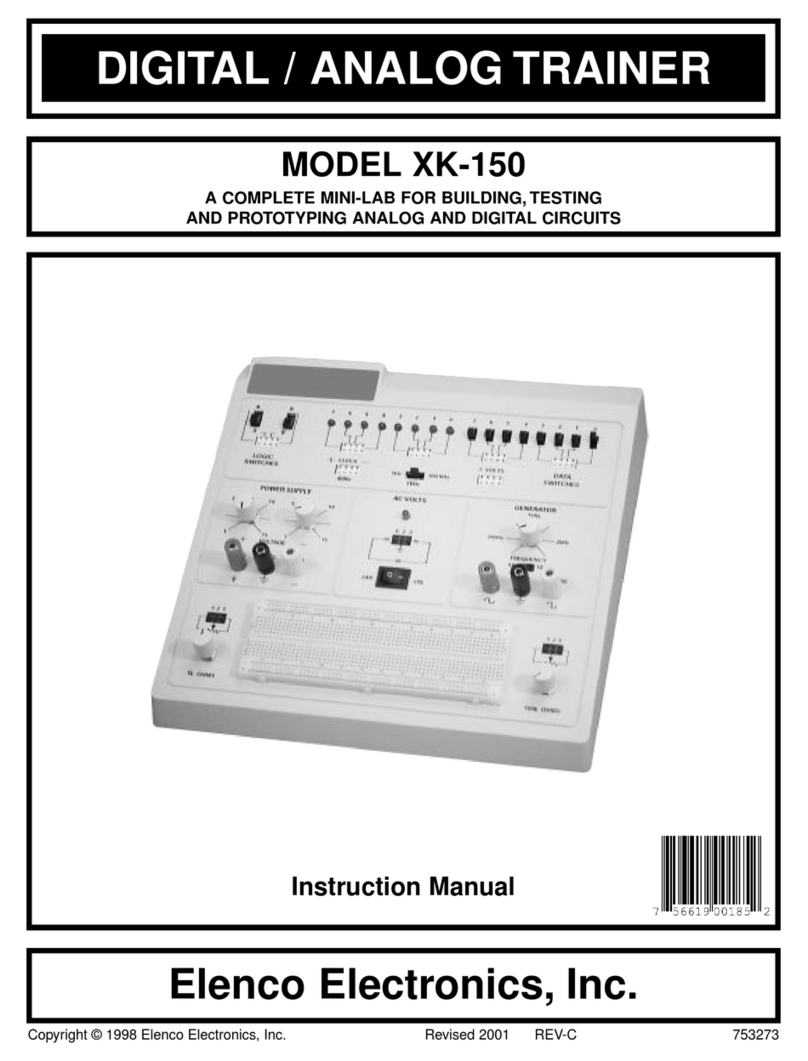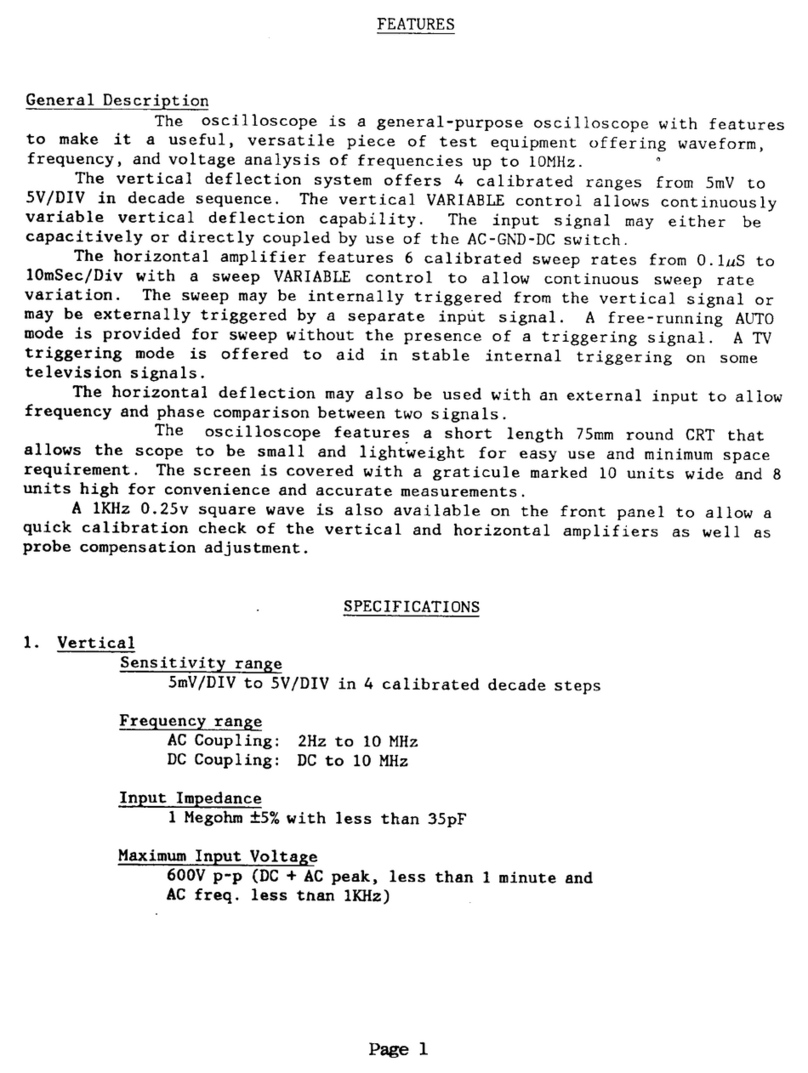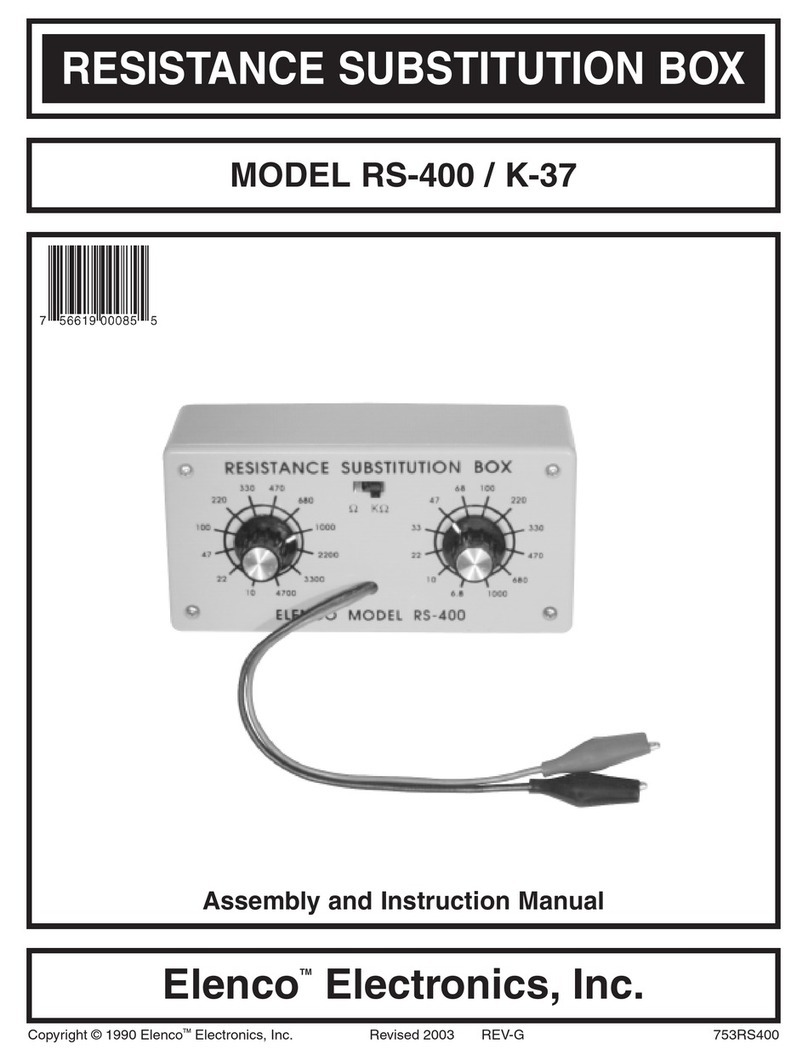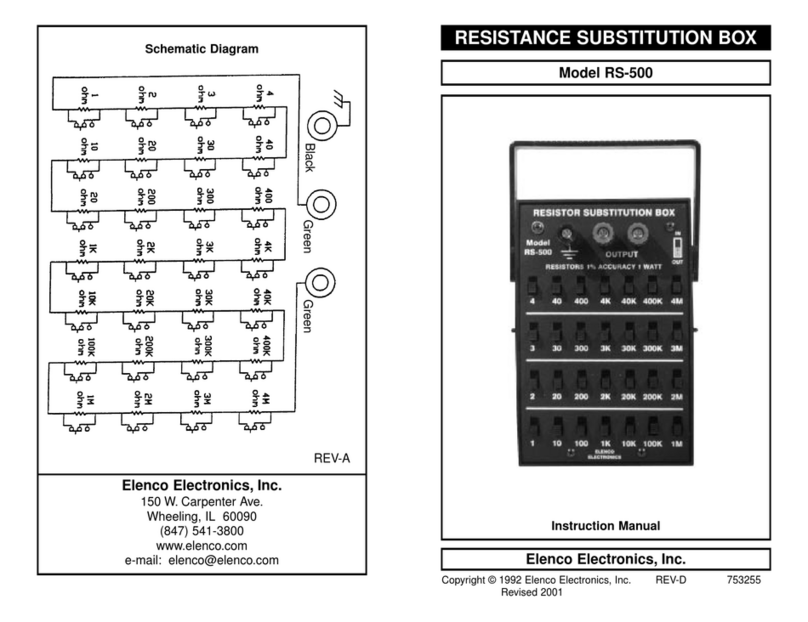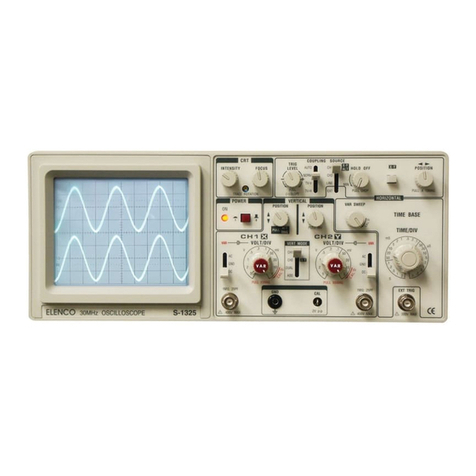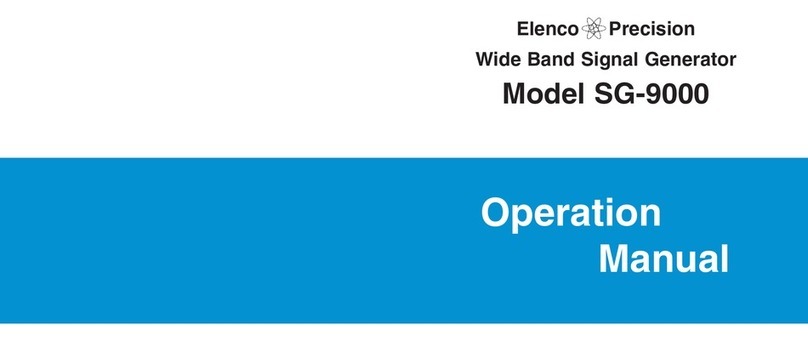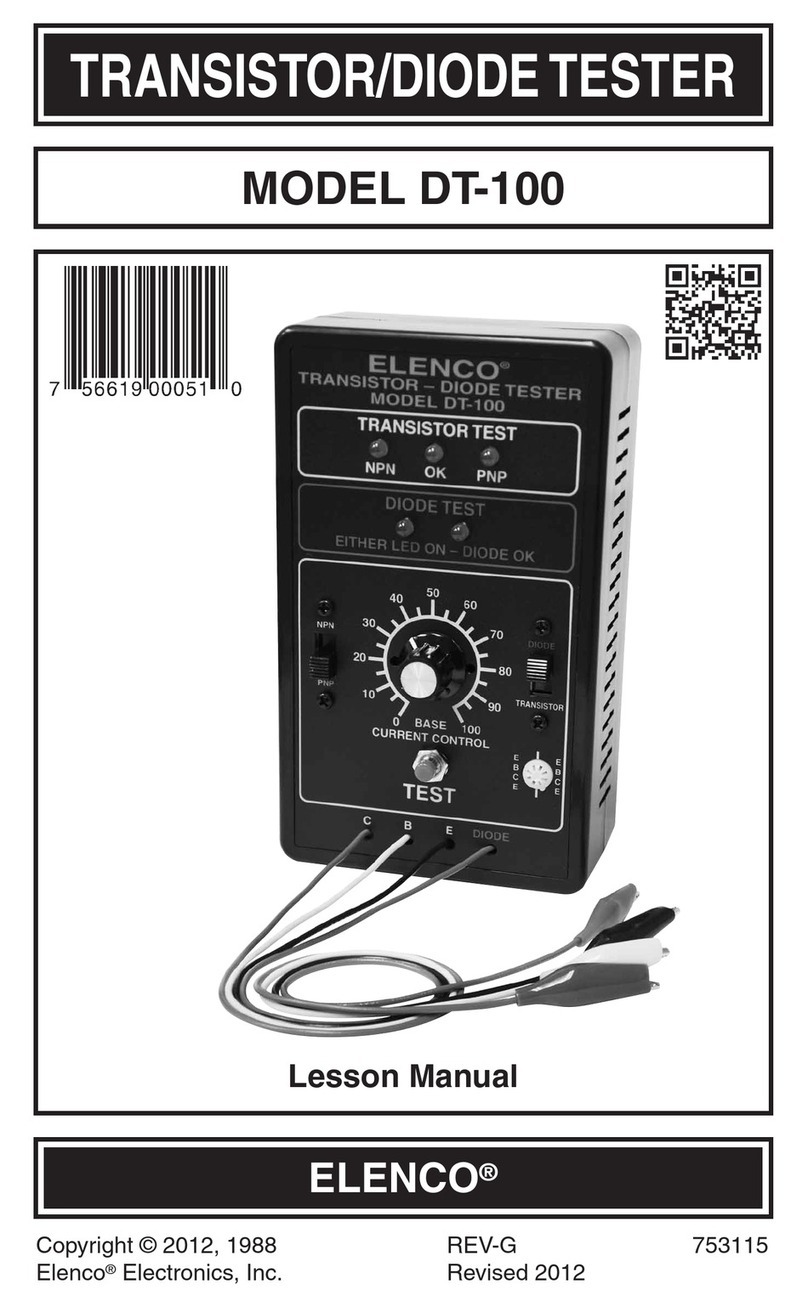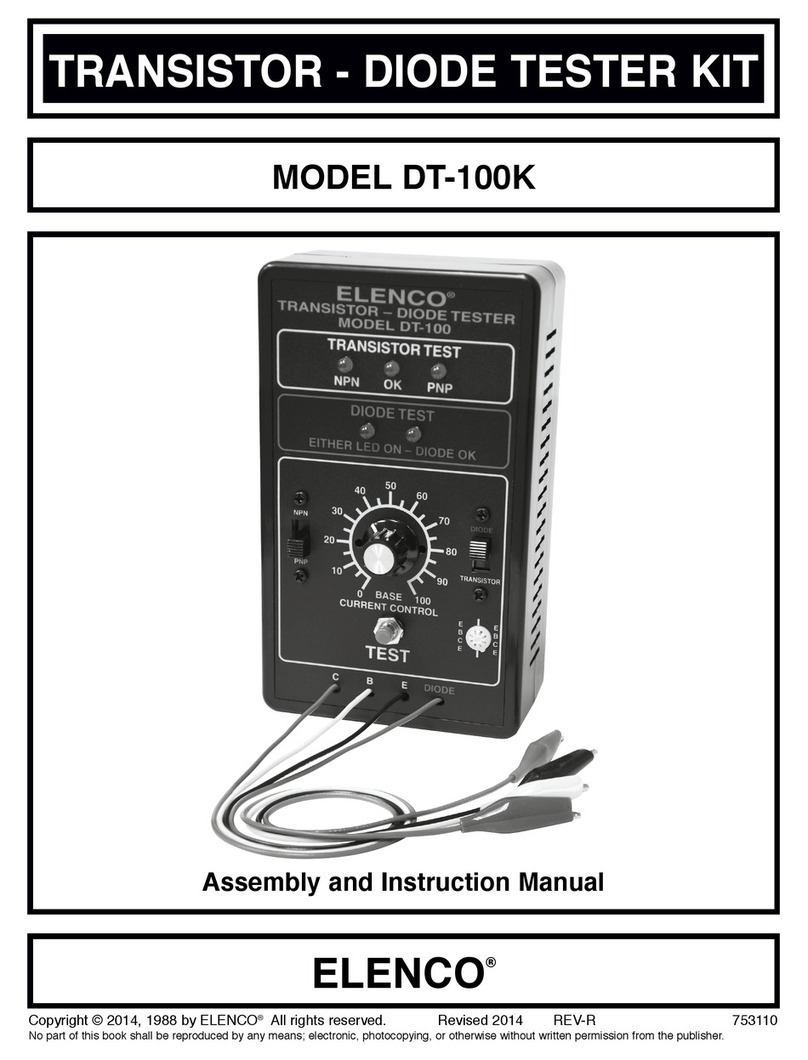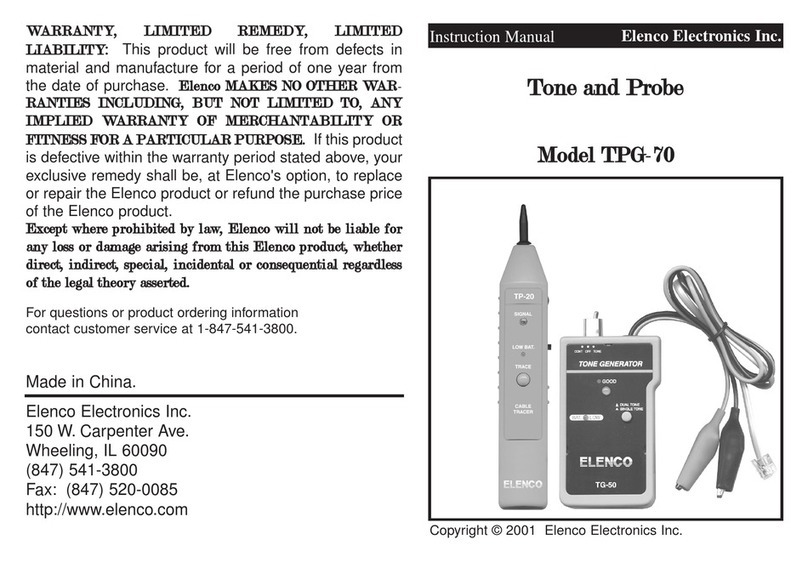-3-
6. When the transistor is shown to be OK, the base current control
gives an indication of transistor beta. The lower the setting
relative to another transistor, the higher the beta. Lamps NP
and PN measure base current. Higher base current results in a
brighter LED. It also indicates if current is entering or leaving
the base, thus, NP or PN respectively will light.
Transistor Testing - In Circuit
The DT-100 will test transistors in circuit, provided the base biasing
resistance is greater than 100W. Simply follow the previous
procedure for testing out of circuit transistors. Do not apply power
to the circuit of the transistor or diode under test. The DT-100 will
supply the necessary power.
CHECKING OUT YOUR TRANSISTOR/DIODE TESTER
The following is a simple procedure for testing your DT-100.
Diode Operation:
1. Place the switch in the diode position. Short the black and red
leads together and push in the test button. The diode test LEDs
should alternately go on at about a 1Hz rate.
2.
Connect the red and black leads to any good diode. Only one LED
should flash, identifying the red lead connection (anode or
cathode). Reversing the leads should cause the other LED to flash.
Transistor Operation:
1. Place the switch in the transistor position. Short the yellow (B)
and black (E) leads together. Press the test button. Vary the
base current control. The NP lamp should light with the switch
in the NPN position and the PN lamp when the switch is in the
PNP position.
2. Place a known good transistor in the test socket with the Emitter
in E, Base in B and Collector in C pins. Be sure none of the
leads are shorting. Vary the base current control. The OK LED
should light up. Note that on the NPN transistor, the NP lamp
also will glow very slightly. This indicates the base current, and
thus lower intensity. The base current control should be
adjusted for the lowest setting with the OK lamp glowing.
-4-
THEORY OF OPERATION
Note the schematic diagram on page 6. The test transistor in this
circuit is an NPN. Adjusting the variable resistor will cause the
NPN LED to light up indicating that the base current is flowing. The
output of the test transistor is fed to amplifiers Q2 and Q3. The
output of Q2 is feedback in phase to the base of the test transistor
causing the circuit to oscillate. Part of the oscillations are fed to a
power rectifier, Q5, which switches on the OK LED indicator.
The design configuration is such that in-circuit transistors can be
measured, provided that the base and collector resistors are
greater than 100W.
When measuring PNP transistors, the power supplied to the test
transistor is reversed via the NPN/PNP switch. Therefore, the PN
LED will light up.
Varying the base current control will reduce the base current. The
lower the base current, the higher the gain of the transistor under
test. Comparative tests of two transistors’ gain (beta), can be
made by observing the dial setting or the intensity of the base LED
diode. The lower the setting with the PN LED lit, the higher the
beta of that transistor.
On diode operation, power is applied to IC1. This causes the
circuit to oscillate at about a 1Hz rate. Placing a diode in series
with the LED indicators will cause a current to flow, depending on
the direction of the diode. Thus, the red test lead will identify the
cathode or anode of the diode via the LED readout. Transistor Q4
reverses the current flow in this circuit.
All types of diodes may be tested: Silicon, germanium, LEDs or
zeners over 6 volts. Zener diodes under 6V causes the second
LED to glow at lower intensity, indicating that zener breakdown has
occurred.
